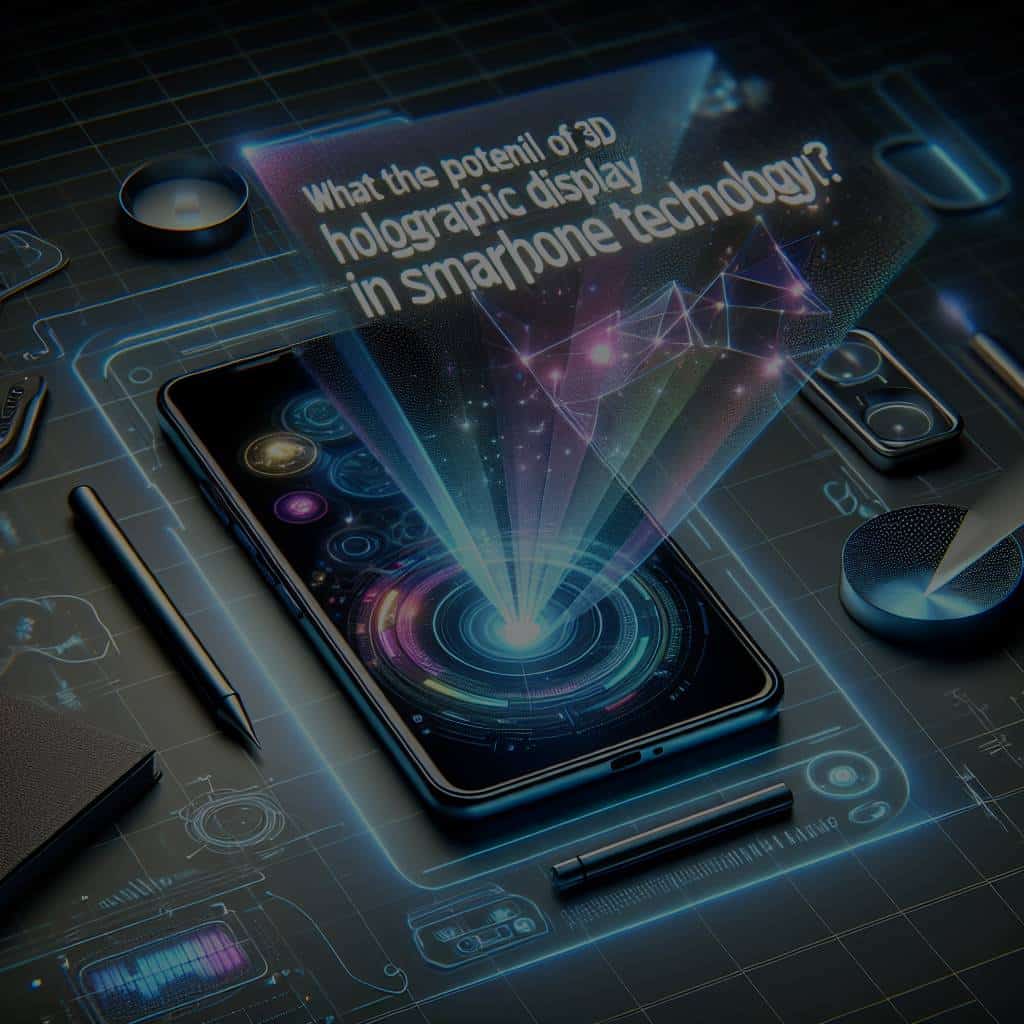The world of technology is constantly evolving, with new advancements being made every day. Among these developments, one that stands out in the mobile industry is the use of 3D holographic displays. This technology, once confined to the realm of science fiction, is now making its way into our everyday lives. In the following sections, we’ll delve into the intricacies of holographic displays, their potential in the smartphone market, how they will shape the future of mobile technology, and the immersive experience they offer.
Understanding the Holographic Display Technology
Before we delve into its applications in the mobile industry, it is crucial to understand what holographic display technology is and how it works. A hologram is a physical structure that diffracts light into an image. The term ‘holography’ comes from the Greek words ‘holos’, meaning ‘whole’, and ‘graphe’, meaning ‘writing’.
This might interest you : How Is AI Being Used to Optimize Electric Grid Distribution and Prevent Outages?
Unlike traditional displays that render images from a two-dimensional perspective, holographic displays create three-dimensional images. They do this by manipulating light waves to project digital content into the physical world. This technology relies on interference, diffraction, light intensity, and illumination to create a virtual 3D world.
The technological advancements in display technology are enabling the miniaturization of these systems. As a result, embedding holography in something as compact as a smartphone is becoming increasingly feasible.
Also to see : Can AI-Enhanced Gene Sequencing Accelerate Personalized Cancer Treatment?
The Market Potential of Holographic Displays in the Mobile Industry
Today, smartphones have become an integral part of our lives. As the smartphone industry continues to evolve, consumers demand more immersive and engaging experiences from their devices. This is where the potential of holographic displays comes to light.
The holographic display market is expected to witness a significant growth in the coming years. According to a report by MarketsandMarkets™, the global holographic display market is projected to reach $3.57 billion by 2025, growing at a Compound Annual Growth Rate (CAGR) of 30.25% from 2020 to 2025. A substantial chunk of this growth is anticipated to be driven by the smartphone industry.
Incorporating holographic displays into smartphones can transform the way we interact with our devices. From 3D video calling to immersive gaming and interactive online shopping, the possibilities are endless. It has the potential to revolutionize sectors like entertainment, healthcare, education, and more.
Shaping the Future of Mobile Technology
The integration of holographic displays in smartphones is expected to redefine the future of mobile technology. It will not just enhance the way we communicate and entertain ourselves but also how we consume information and interact with digital content.
Imagine sitting in a meeting and being able to project a 3D holographic model of your new product design from your smartphone for everyone to see. Or imagine a doctor explaining a complex medical procedure using a 3D holographic model projected from their smartphone. These scenarios that once seemed like science fiction are now inching closer to reality.
Moreover, with the advent of 5G technology and Artificial Intelligence (AI), the potential for holographic displays in smartphones becomes even more promising.
Offering an Immersive Experience
One of the primary benefits of holographic displays is the immersive experience they offer. Traditional 2D displays have a limited field of view and depth perception. On the other hand, 3D holographic displays provide a 360-degree field of view, giving the user a sense of depth and realism. This can significantly enhance user engagement and interaction.
The use of holographic displays in smartphones can take this immersive experience to a whole new level. Imagine watching a movie or playing a game on your smartphone where the characters and objects appear in three dimensions, making you feel as if you are part of the action.
Challenges and the Road Ahead
Despite its immense potential, the integration of holographic displays in smartphones also comes with its set of challenges. These include issues related to power consumption, image quality, viewing angles, and device thickness, among others.
Moreover, creating a user-friendly interface for this immersive technology is crucial. Developers must ensure that the technology is accessible and easy to use for all users, irrespective of their technical proficiency.
Despite these challenges, the future of holographic displays in smartphone technology seems bright. With continuous advancements in technology and increasing consumer demand for immersive experiences, it won’t be long before we see smartphones with 3D holographic displays becoming mainstream.
The Expanding Holographic Display Services Market
The display services market is expanding rapidly as technology progresses, and holographic displays are set to play a significant role in this growth. As previously stated, the global holographic display market is projected to reach $3.57 billion by 2025. This implies a substantial increase in the demand for holographic display services.
As the market size grows, the competition amongst technology companies to incorporate holographic technology into their products will also intensify. This competition is likely to stimulate innovation and advancements in holographic technology, which will, in turn, contribute to a more widespread adoption of this technology.
The comprehensive holographic display services include the creation of digital signage, three-dimensional imaging, augmented reality experiences, and real-time holographic interactions. The incorporation of these services into smartphones could offer unmatched user experiences, from immersive gaming to virtual reality interactions.
In addition, the medical imaging field can also significantly benefit from holographic display services. For instance, doctors could use smartphones equipped with 3D holographic displays to project intricate medical images or perform complex procedures with better accuracy and precision.
Future of Holographic Displays and Conclusion
The future of holographic displays in smartphones is exciting and holds immense potential. In the coming years, we can anticipate a significant transformation in the way we interact with our mobile devices, driven by the integration of holographic display technology.
The entertainment sector will likely be one of the first to adopt this technology, given its potential to offer an unparalleled immersive experience. We could witness a new era of gaming, movies, and digital art, all powered by the 3D holographic displays on our smartphones.
In the education sector, hologram technology can bring about a radical change in teaching methodologies. Imagine a teacher explaining complex concepts using 3D models or a student taking a virtual tour of the solar system right from their classroom.
There is also a growing interest in the potential of holographic displays in the field of augmented and virtual reality. Smartphones equipped with holographic displays could redefine our AR and VR experiences, making them more realistic and engaging.
Additionally, the advent of 5G technology will only enhance the offerings of holographic displays. The real-time projection of high-definition 3D images and videos would become possible with the ultra-high-speed data transfer capabilities of 5G networks.
Despite the potential challenges such as power consumption, device thickness, and creating a user-friendly interface, the future of holographic displays in smartphone technology is undoubtedly promising.
In conclusion, while we are still at the early stages of this technology, the pace of advancements and the growing consumer demand for immersive experiences are strong indicators that holographic displays are not just a futuristic concept, but a reality that is gradually unfolding. As we move forward, the possibilities seem endless, and the future of smartphone technology, driven by holographic displays, indeed looks bright.






